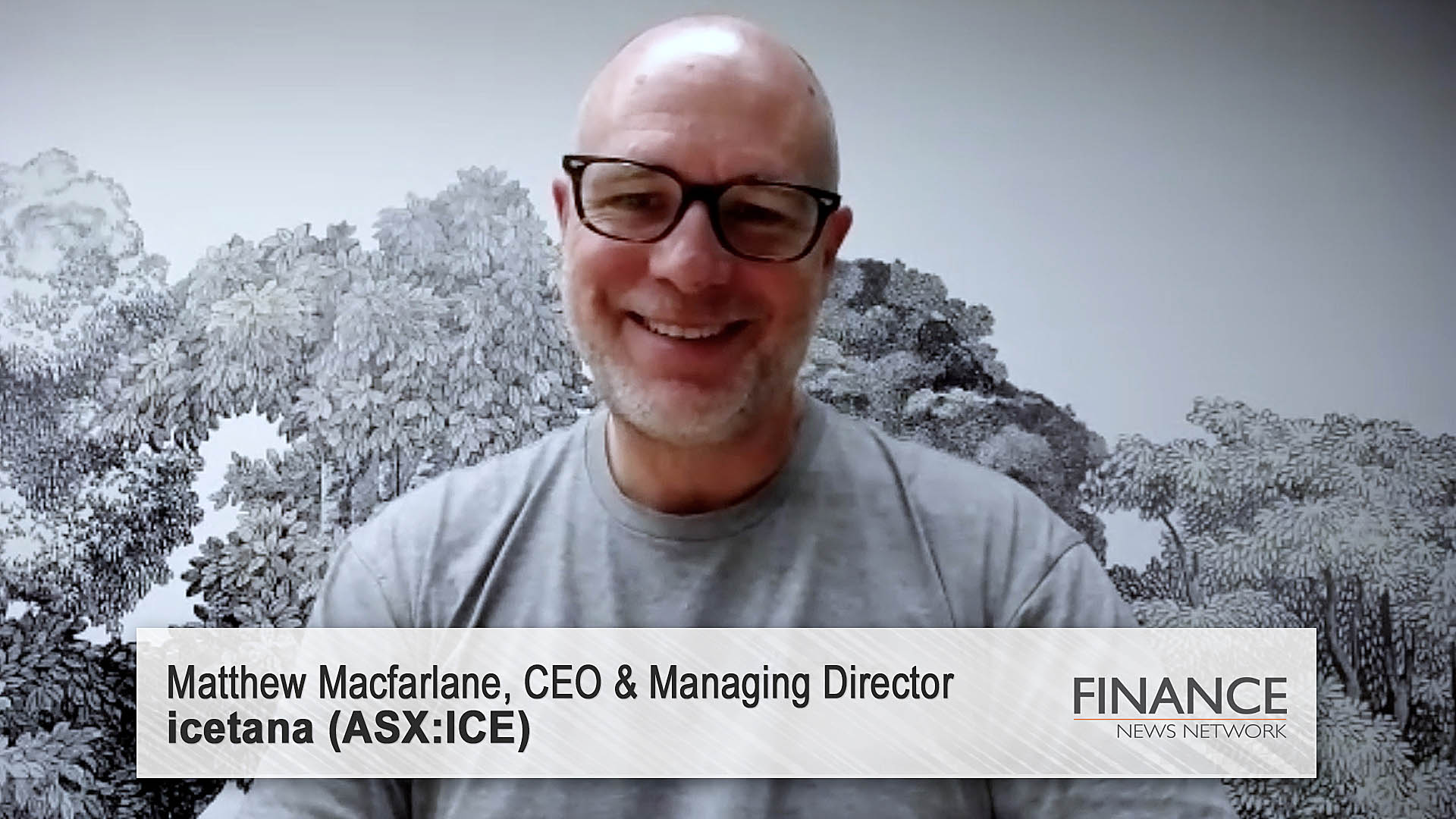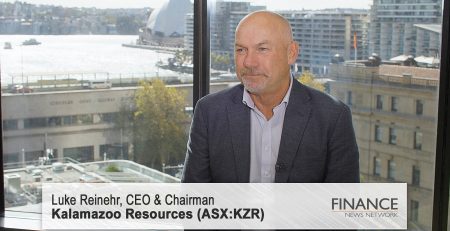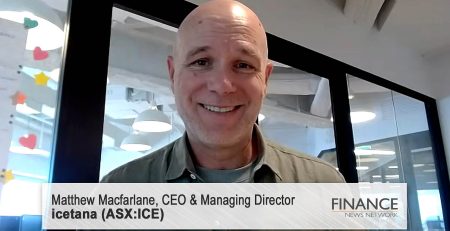icetana (ASX:ICE) quarterly investor update, July 2021
icetana (ASX:ICE) CEO and Managing Director Matt Macfarlane provides an update for the June quarter 2021.
Lauren Evans: Hi. This is Lauren Evans for the Finance News Network. Joining me from icetana (ASX:ICE) is MD and CEO, Matt Macfarlane. Matt, welcome back.
Matthew Macfarlane: Hi, nice to be with you again.
Lauren Evans: It's nice to see you again. First up, icetana is a video analytics surveillance business with a difference. Can you remind our audience about your approach?
Matthew Macfarlane: Sure. So, icetana builds software that uses AI technology to understand movement patterns in front of surveillance cameras. We create a model of what takes place in front of each individual camera, and then, having developed that model, we start to report anomalous and unusual events. So, that might be a car going the wrong way down a one-way street, it might be a fight breaking out between two people where it's normally just a regular walkway, anything where movement is very, very unusual. So, a nice way to think about icetana is kind of like movement detection on steroids. Normal movement detection will pick up 60 per cent of things. In other words, whenever a tree blows in the breeze. icetana will just pick up 2 per cent of things. So, we filter out all of the normal movement and we report the most interesting stuff.
Lauren Evans: Thanks, Matt. So, now to the highlights from your recent investor update. Can you tell us more, starting with the financials?
Matthew Macfarlane: Sure. So, we reported ARR for the first time in the last quarter, and that's our annualised recurring revenue. So what we do is we recognise our software revenue as we deliver software and the services are provided to the customer. We recognise that on a monthly basis. To get the annualised recurring revenue, you take that monthly number and you multiply it out by 12. So, you get a really good feel for where revenues are heading, particularly if you can hold on to your customers well, keep your churn nice and low. And we've had an extraordinarily strong record of customers being retained by us. So, last quarter we implemented across April, May and June a large number of additional cameras, started to recognise much more revenue, and so we had a 64 per cent jump in quarterly revenue recognition over that period from an ARR basis. So, we were really happy to get that happening, and that was largely driven by reducing impact of COVID for us to go and install our software.
Lauren Evans: Great, thanks. And what about your contract wins?
Matthew Macfarlane: So, since the IPO, we've still managed to tick over contracts. There has been, of course, a significant sentiment impact from COVID, but we've signed over $2 million of orders since the IPO, and it's really nice to start to be able to implement those and recognise that revenue as it comes through. All the larger contracts, anything that's north of about $100,000, and we do get those sometimes with our clients, we tend to announce when we close the deal, we get the purchase order. But it does take three or four months after that purchase order until the revenue starts being recognised in order for us to get the implementation in place usually.
Lauren Evans: And how about the product development?
Matthew Macfarlane: Yeah, so we started to talk about our new product that we've been working on very diligently for the last 18 months or so for the first time in our quarterly update. This new product has really been built from the ground up, taking contemporary technologies, using things like DeepStream from NVIDIA and allows us to migrate to a much more flexible system that addresses our customer needs more accurately. Some of the developments we've done in that, particularly on the front end, are really exciting, and we've lodged a patent in the last two weeks for some of the interface developments that we've done. We're really excited to get that product into the market before the end of the calendar year. We're getting really positive feedback already from our customers about the direction we're heading in. It just takes our existing experience of 10 years and makes it much more targeted to those customer requirements. So, we're hoping that our lead time to sale will reduce dramatically and also our conversion of leads into selling opportunities will jump upwards as well.
Lauren Evans: So, Matt, AI is attracting a lot of players. What is the competitive landscape in video surveillance at present?
Matthew Macfarlane: Yeah. Look, there are a lot of competitors trying to address this problem. It's a big problem. There's 600 million surveillance cameras around the world, and most of them are just recording footage. They're not providing real-time response. So, whilst most of our competitors use an approach called rules-based analytics — they listen to the customers and say, "What's your specific problem?", and then they create a rule to respond to that problem — what our system does is it itself trains what's normal, and understands for each camera what's normal and what's going on in front of it, and then reports anything that's weird and unusual. And that differentiation is really interesting when you get in front of clients, because we can tick a whole bunch of boxes of potential things happening as well as the unknown that you can't have ever imagined happening, and it allows customers to jump into the world of real-time surveillance in a much more, I guess, broad manner rather than just dealing with one specific particular problem.
However, the platform that we're building with V2 will allow us to add that specificity in there as well. So, not only will we report the general events taking place, but we can also say, "OK, now we're going to highlight for you," say you're in a prison, "we're going to highlight when we see a fight," and we start to detect. So, we are combining the best of rules-based systems with the anomaly-detection system that we built originally.
Lauren Evans: So, last question from me, Matt, is there anything else that you'd like to add today?
Matthew Macfarlane: Oh, look, we're just really excited by the way that vaccines are rolling out and the ability for us to get into our clients. Our pipeline, by the way, has also grown quite dramatically in the fourth quarter, so a lot more interest in the product, which meant we could ship out more and more proposals. That's a nice leading indicator to growing revenue. So, we're looking forward to the financial year ahead, and the team is doing a fantastic job. We actually implemented a lot of cost controls through COVID, kept the team nice and lean. And I don't know if you've read that book from the guy from Netflix, but when you reduce your team, sometimes you can actually lift productivity. And that certainly happened within icetana. So, I'm excited about the 12 months ahead, and it's great to talk to you.
Lauren Evans: Well, Matt Macfarlane, thanks so much for the update today, and good luck in the future.
Matthew Macfarlane: Thanks very much.
Ends
Copyright 2021 – Finance News Network
Source: Finance News Network











